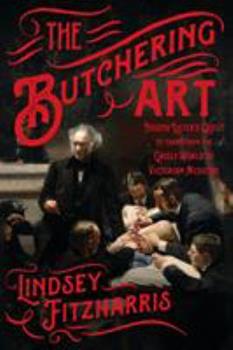Book Review: The Butchering Art by Lindsey Fitzharris
It was not that long ago that surgeons and surgery were to be feared. Without anesthetics, the pain and shock of having your body cut into would often kill the patient. And if they survived that, the chances were good that infection would set in. A combination of putrefying diseases known as “hospitalism” ran rampant, making hospitals not places of healing, but houses of death. It wasn’t until the 1840s that ether became the first reliable anesthetic, making it possible for surgeons to cut deeper and take more time. One of the observers at an 1846 demonstration of painless amputation was young Joseph Lister.

Joseph Lister was born to Quaker parents near London in 1827. His father, Joseph Jackson Lister, had developed an achromatic lens that advanced the technology of microscopes. Young Joseph grew up learning how to use the microscope and use the scientific method, which he was to put to good use in his medical career. Despite his father’s distrust of institutionalized medicine, Lister decided to become a surgeon.
Lister proved an excellent student and a skilled surgeon, winding up at a college and teaching hospital in Edinburgh. But he was still losing too many patients to post-operative infections. Finally, Lister learned of the work of Louis Pasteur and quickly realized that at least some infections were caused by microscopic organism, “germs” if you like.
While Lister was not the first doctor to realize that cleanliness could reduce infection, his systematic experimentation regarding antiseptic measures was a major advancement in medical science. After a few years, he had a process that reduced postoperative infections to a minimum, and spread this news. Unfortunately, not every surgeon believed in this new-fangled “germ theory” and attacks were made on both the process and Lister himself.
This biography of Joseph Lister goes into much more detail, including nauseating descriptions of surgical procedures and pre-cleanliness hospital conditions. It also talks about the background of other surgeons important to the story, which is good as I have never taken medical history and had not heard of these people.
This volume is primarily about Lister’s struggle to figure out how to prevent infection, and then to get the news out. The rather long time period after his work was generally accepted and Lister became a figure of renown (he operated on Queen Victoria!) is summarized in an epilogue.
Others have since built on Joseph Lister’s work, and the medical field has advanced immensely, but without him, infection control would be decades behind.
The prose is quite readable (though you will need that strong stomach) and the subject is fascinating. The only illustration is the frontispiece, which does not actually depict Lister, which is a pity. There are endnotes, acknowledgements, and an index.
Highly recommended to those interested in medical history and the advancement of science over the centuries.

